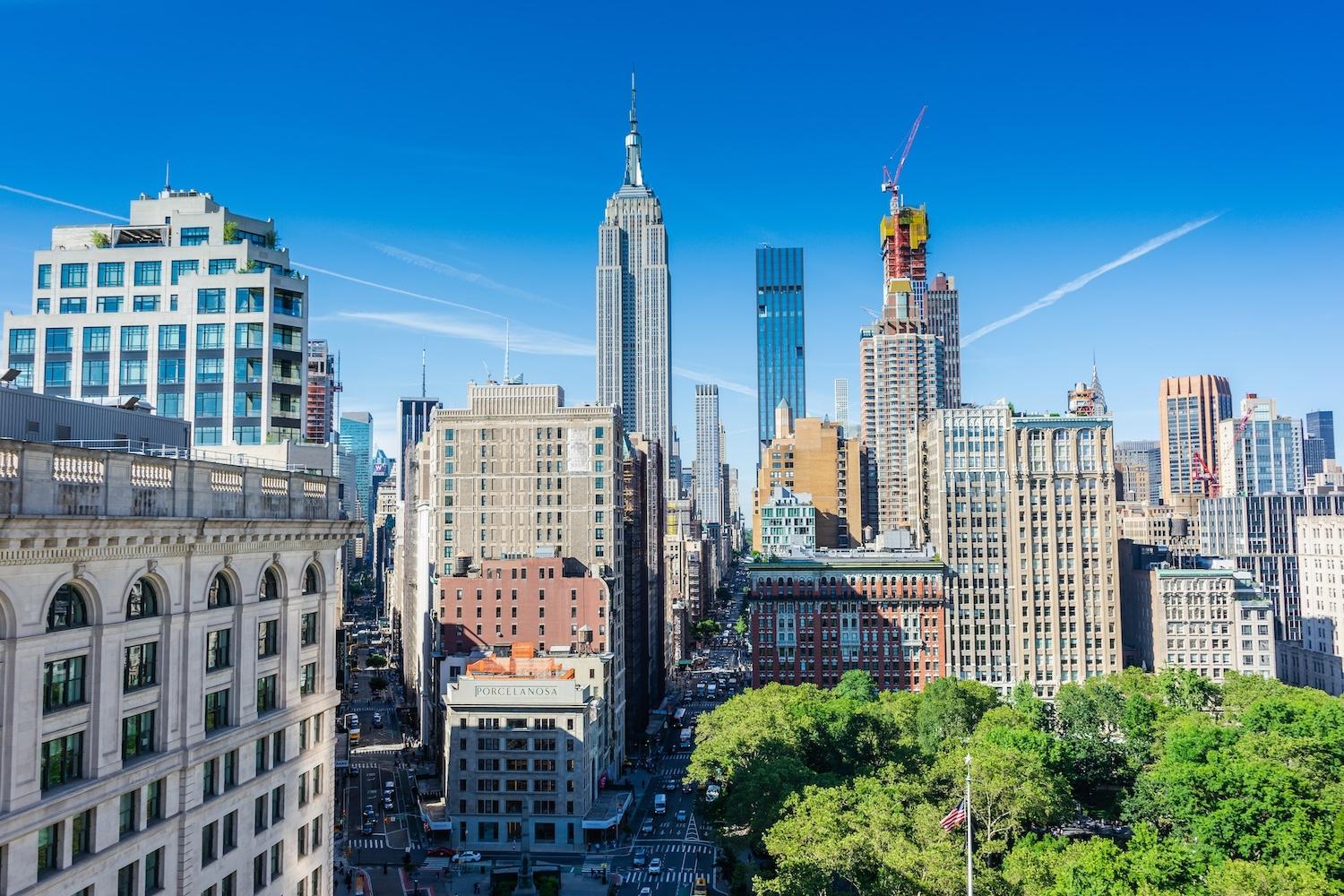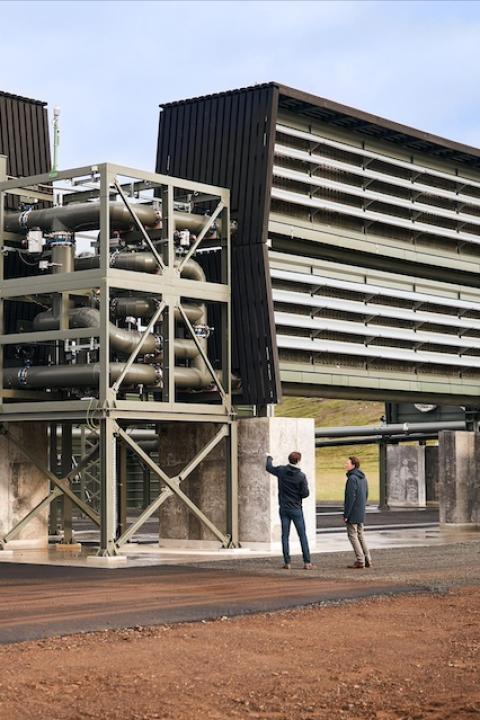
(Image: Jason Krieger/Unsplash)
This story on converting unused office space to affordable housing is part of The Solutions Effect, a monthly newsletter covering the best of solutions journalism in the sustainability and social impact space. If you aren't already getting this newsletter, you can sign up here.
All year we’ve seen companies across the United States take their stance on returning to in-person work. We can debate the importance of in-office collaboration and whether remote work boosts or hampers productivity well into next year, and I bet we will. But what if returning to the office doesn't mean people working there?
Downtowns are struggling without office workers. Small businesses built to meet the needs of those commuting to work, like lunch spots and corner stores, cannot survive when their clientele stops showing up. Many companies are requiring their employees to return to in-person work at least part-time, but remote work seems to be here to stay. Around 40 percent of businesses still say the majority of their employees work both from home and in the office, though this rate has decreased significantly since last year, according to a 2023 survey of over 500 business owners and facilities managers by the hybrid workplace platform Robin.
This year, office space is on track to reach a net decline for the first time since 2000 — likely for the first time in history, but the data doesn’t go back further than that — as Bloomberg reported in July. Seventy-five percent of businesses plan to downsize their office space next year, and 82 percent are worried they can’t keep their current space due to underutilization or a recession, according to Robin’s 2023 survey.
Meanwhile, cities are facing a concurrent problem: an affordable housing shortage. The U.S. is 7.3 million rental homes short of meeting the needs of renters with extremely low incomes, according to the National Low Income Housing Coalition. “That is, incomes at or below either the federal poverty guideline or 30 percent of their area median income, whichever is greater. Only 33 affordable and available rental homes exist for every 100 extremely low-income renter households.”
So, the U.S. needs millions of affordable apartments, and downtowns full of half-empty offices need foot traffic to sustain the local economy. You can probably see where this is going.
In the rural part of the Midwest where I grew up, it’s become normal to enter a Family Video building — recognizable by the signature glass pillar out front — with no intention of picking out a movie, as many of them were transformed into entirely new stores when everyone stopped renting DVDs. Our buildings evolve with us. Who’s to say that what we think of as a high-rise building stuffed with cubicles now can’t be a typical apartment building in the future?
Across the country, 45,000 offices are currently under renovation to become rental apartments, according to a 2023 report from the apartment listing service RentCafe. Converting empty commercial and office space into living space offers the opportunity to address both problems with a single solution. Some developers already made this a reality. In Rochester, New York, designers added windows, courtyards, and rooms to an old Sears building to convert it into a 73-unit apartment complex for low-income seniors, Fast Company reported earlier this month. The project was made possible with tax credits for low-income housing and financial support from the city.
In Philadelphia, an office building from 1929 was converted into 206 apartments back in 2014. Buildings from this era were designed with features like opening windows and offices with no more than 26 feet between the outer wall and the central corridor. Thus, they are easier to turn into rental units that get plenty of natural light without having to significantly alter the structure of the building, The New York Times reports.
It’s not impossible to transform modern offices that are wider, taller and further away from the design of a typical apartment building, either. A 457,000-square-foot office built in New York City in 1970 was made into an apartment complex in 2017, The New York Times reports. Still, redesigning buildings like this is an expensive, complicated task. Among other things, the developers had to add a courtyard through the center of the building and replace the exterior walls of inoperable windows to make it work. Laws that require residential units to have windows that open vary across the country, but they are necessary in New York.
Apart from the difficult design process, zoning regulations often limit what’s possible, and the overall cost often pushes rents into the luxury price point so developers can recoup their losses. But like the Sears project in Rochester, cities can make affordable units a feasible part of these projects with economic incentives like tax reductions and subsidies.
Starting in 2024, a new pilot project in Boston will offer reduced property taxes for those who convert their commercial office space for residential use. The mayor of Washington, D.C. also proposed expanding the city’s property tax break program for commercial-to-residential developments this year. Several projects are already underway in D.C., totaling an estimated 2,500 new apartments. At least one — a 1980s office building previously used as the headquarters for the National Association for the Education of Young Children — is set to be completed by next year.
Of course, there is no one-size-fits-all way to utilize vacant downtown spaces and address the housing crisis. This is just one option in the slew of solutions required to address the issues. While office space redesigns aren’t possible everywhere, they are succeeding in some locations, and many other buildings hold the same untapped potential.
Dive deeper into this solution:
- This old Sears store is now an apartment building, Fast Company
- Here’s How to Solve a 25-Story Rubik’s Cube, The New York Times
- Video: What It Takes to Convert a Multimillion-Dollar Office Into Housing, The Wall Street Journal

Taylor’s work spans print, podcasts, photography and radio. She brings her passion for covering social and environmental issues through the lens of solutions journalism to her work as editorial assistant.














